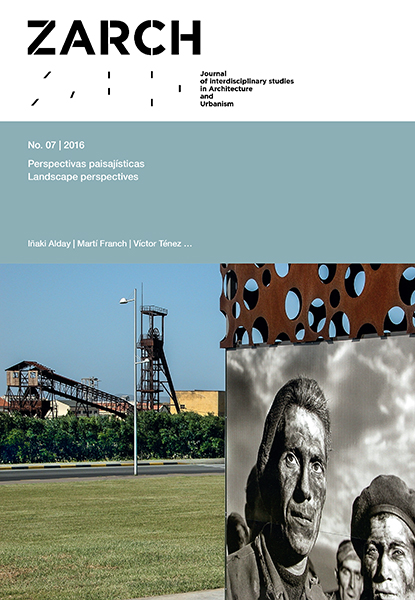El inventario como proyecto de paisaje: Diseñando el imaginario territorial americano
DOI:
https://doi.org/10.26754/ojs_zarch/zarch.201671526Abstract
Estamos habituados a que el paisaje contemporáneo se nos muestre, cada vez con mayor frecuencia, no como una realidad integrada sino como una colección de fragmentos en ocasiones heterogéneos e inconexos. Este fenómeno puede ser interpretado como un producto posmoderno, como el resultado de los nuevos medios de representación visual o incluso constituir un diagnóstico del propio territorio. Sin embargo puede reconocerse también en él un mecanismo de construcción de paisaje vinculado no tanto a la producción de un lugar como a la transmisión de ideas que se hacen visibles a través de su representación territorial. La tradición americana del paisaje, y particularmente la vinculada al territorio estadounidense de posguerra, ofrece algunas muestras de cómo, a través de la formalización de inventarios, de colecciones selectivas, ordenadas y contextualizadas de elementos territoriales, manipular el modo en que determinadas realidades espaciales, pero también sociales y culturales, son percibidas e interpretadas más allá de la apreciación individualizada de cada uno de sus componentes. El inventario territorial asume en estos casos no solo una función documental y descriptiva, sino que se convierte en un proyecto de paisaje.
Palabras clave: Paisaje, Estados Unidos, Inventario, Fotografía, Arquitectura
We are acquiring the habit of seeing the contemporary landscape not as an integrated reality but as a collection of heterogeneous and unconnected fragments. This fact can be understood as a result of Postmodernism, as the result of the newest means of visual representation, or can even be showing us a diagnosis of the territory itself. However, a tool for landscape making, which is not only linked to the production of place but also to the transmission of meanings that are become visible through their territorial representations, can be recognized in this way of seeing. The American landscape culture, and above all that which was raised in the postwar period, gives us some examples of how the way in which certain spatial, but also social and cultural, realities are perceived and interpreted can be guided through the building of a selective, sorted and contextualized collection of territorial elements, a territorial inventory, whose components are not going to be understood individually, but as a whole. In these cases, the territorial inventory not only plays a descriptive and documentary role, but it becomes a landscape project as well.
Keywords: Landscape, United States, Inventory, Photography, Architecture





